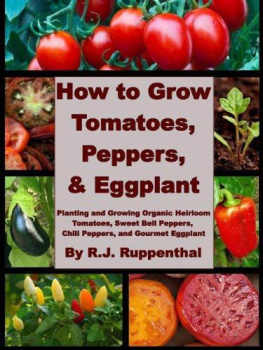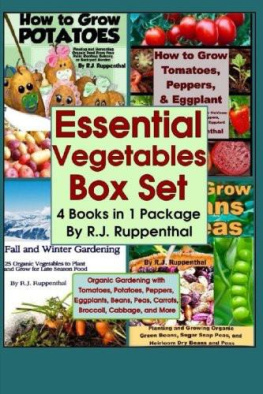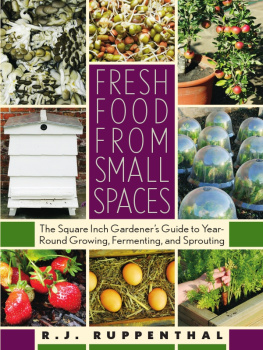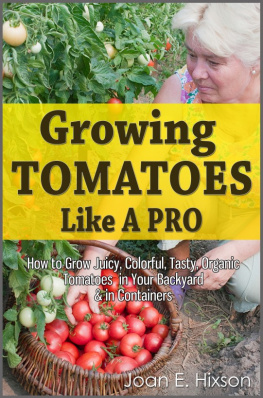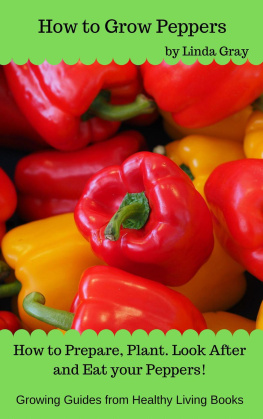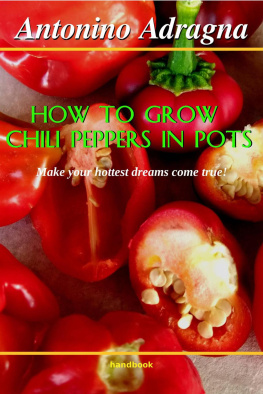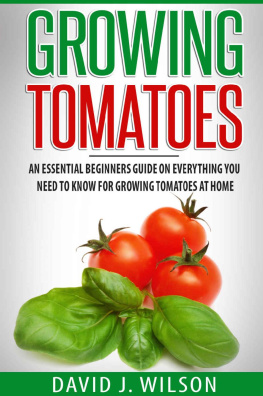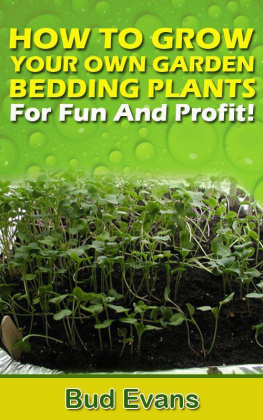Ruppenthal - How to Grow Tomatoes, Peppers, and Eggplant: Planting and Growing Organic Heirloom Tomatoes, Sweet Bell Peppers, Chili Peppers, and Gourmet Eggplant
Here you can read online Ruppenthal - How to Grow Tomatoes, Peppers, and Eggplant: Planting and Growing Organic Heirloom Tomatoes, Sweet Bell Peppers, Chili Peppers, and Gourmet Eggplant full text of the book (entire story) in english for free. Download pdf and epub, get meaning, cover and reviews about this ebook. year: 2013, genre: Children. Description of the work, (preface) as well as reviews are available. Best literature library LitArk.com created for fans of good reading and offers a wide selection of genres:
Romance novel
Science fiction
Adventure
Detective
Science
History
Home and family
Prose
Art
Politics
Computer
Non-fiction
Religion
Business
Children
Humor
Choose a favorite category and find really read worthwhile books. Enjoy immersion in the world of imagination, feel the emotions of the characters or learn something new for yourself, make an fascinating discovery.
- Book:How to Grow Tomatoes, Peppers, and Eggplant: Planting and Growing Organic Heirloom Tomatoes, Sweet Bell Peppers, Chili Peppers, and Gourmet Eggplant
- Author:
- Genre:
- Year:2013
- Rating:5 / 5
- Favourites:Add to favourites
- Your mark:
How to Grow Tomatoes, Peppers, and Eggplant: Planting and Growing Organic Heirloom Tomatoes, Sweet Bell Peppers, Chili Peppers, and Gourmet Eggplant: summary, description and annotation
We offer to read an annotation, description, summary or preface (depends on what the author of the book "How to Grow Tomatoes, Peppers, and Eggplant: Planting and Growing Organic Heirloom Tomatoes, Sweet Bell Peppers, Chili Peppers, and Gourmet Eggplant" wrote himself). If you haven't found the necessary information about the book — write in the comments, we will try to find it.
Homegrown tomatoes, peppers, and eggplants provide the true taste of summer. These three plants, which are closely related, thrive in warm summer weather and are simple to grow in most home gardens. Whether you have acres of land, just enough space for a few plants in the yard, or simply a container or two on your patio, balcony, deck, rooftop, or doorstep, then you can grow tomatoes, peppers, and eggplants.
This short book will show you how to grow organic tomatoes, peppers, and eggplants. We will cover all the important things you need to know: how to prepare your garden space, plant your vegetables from seed or seedling, take good care of the plants (including proper feeding and watering), and harvest them for fresh use or storage. If you consider yourself a lazy gardener, then this is the perfect book for you, because I like to keep it simple. You will learn some simple techniques to cut down on your watering and weeding.
Contents Include:
1. Growing Your Own Tomatoes, Peppers, and Eggplants
The Worlds Most Popular Homegrown Vegetables
Starting with Seeds or Seedlings
How to Plant Tomatoes, Peppers, and EggplantsWhere to Locate Your Garden
Getting the Best Results From Your PlantsContainer Gardening in Small Spaces
Fresh Produce From Your Patio, Deck, Balcony, Rooftop, or RaftersGrowing in Raised Beds and Garden Rows
Preparing Your Organic Vegetable GardenSupporting Your Tomato Plants
Stakes, Cages, or Trellises?Feeding Your Plants
Giving Them the Nutrition They NeedWatering Your Tomatoes, Peppers, and Eggplants
Techniques to Limit Diseases and Automate the ProcessThree Tips for Pampering Your Plants
Happy Plants Produce Lots of Fruit
Appendix A: Homegrown Tomato Sauce (Recipe)
Appendix B: How to Dry and Store Tomatoes, Peppers, and Eggplants
Appendix C: 12 Delicious and Unusual Varieties of Tomatoes, Peppers, and Eggplants...And Where to Get Some Seeds!
Feedback from readers so far:
Were wild about home grown tomatoes. This booklet has start-to-finish information on raising tomatoes, sweet peppers, chiles, and eggplant. If you live in the city, you should get it.--Sarah K., Chicago, IL
The tips for keeping your plants happy are first-rate. As a lazy gardener, I can appreciate the time saving ideas.--Amber Brown, Santa Barbara, CA
Another practical gardening manual from someone who has focused on these no nonsense guides. Again, he shows a great knowledge of the subject and makes every word count. This book is well researched and practical, skimpy on the pages, but big on content. Good choice for anyone who wants to grow organic vegetables, especially tomatoes.--Tom B., Utah
R.J. Ruppenthal is a licensed attorney and college professor in California who has a passion for growing and raising some of his own food. He regularly writes and blogs about fruit and vegetable gardening, growing food in small urban spaces, sustainability, and raising backyard chickens. On occasion, he even puts his degrees to use and writes something about law or government. You can follow his blogs at backyardcvf.blogspot.com or on his Amazon Authors Page (click on his name above to get there).
Ruppenthal: author's other books
Who wrote How to Grow Tomatoes, Peppers, and Eggplant: Planting and Growing Organic Heirloom Tomatoes, Sweet Bell Peppers, Chili Peppers, and Gourmet Eggplant? Find out the surname, the name of the author of the book and a list of all author's works by series.

